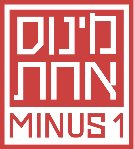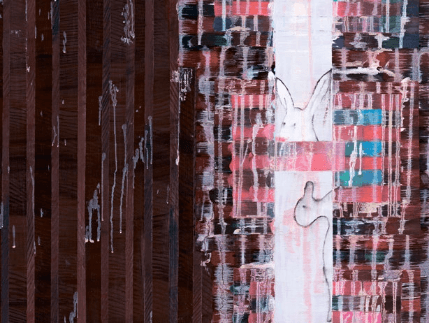The works in this exhibition share an analogic structure, based on relations of resemblance and difference between two or more entities. At the center of each work is a multiple image, usually of a duality or a pair – words, objects, figures, body organs, signifiers and more – or of many duplicates, which replicate and divide while becoming arranged in various assemblages. The image is created amid diverse strategies of multiplication – copying, cutting, pasting, coupling, merging, repetitiveness – and the replicated structure appears in some of the works once again in the format itself, as diptych, triptych or multipart series. The works’ world of content is diverse: language, family, identity, nationhood, capitalism, gender, body and others. But in every case, the positioning of two or more images next to one other, upon one another or emanating from one another, renders the relations of sameness/difference a central theme.
The sameness/difference relationship is active, functioning as a force that both undoes and constructs connections, dismantles and arranges, enabling the system to reorganize constantly in a way that is the same but other, “same thing” but different, in every realm of life: in biology, in sociology, in psychology, in politics and of course in art. The shifting nuances, interpretations and contexts are the dynamic conditions of the arena, thrusting the viewer willy-nilly into a “spot the differences” game. However, difference is not measured between two demarcated, stable identities or entities, but entails those in constant motion and transfiguration that do not permit it to be firmly fixed, and is itself in motion. Apprehending difference as not being based on the logic of identity but the opposite – seeing it, too, as being contingent on difference, on the difference that makes the difference – has implications for the possibility of assigning meaning. Because difference is in constant motion, its moment of appearance is not unitary, but is a multiplicity of successively recurring moments. Meaning is thus repeatedly deferred and does not stabilize; it has no final state.
The visual image, which in numerous cases is devoted to blurring the distinction between identity and resemblance through the agencies of realism, symbolism, metaphor and the like, has the power to expose the failure built into it, and thus to embody the possibility of the impossible. For, after all, image is not separate from reality; it is present on the same continuum as the entities – it does not reflect them, symbolize them or represent them separately – and therefore, instead of probing the difference between image and reality, it is necessary to examine the mechanism of demarcation and the relations of sameness/difference that underlie it.

